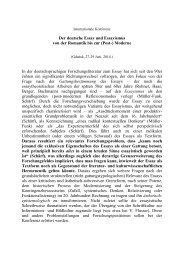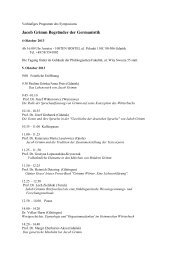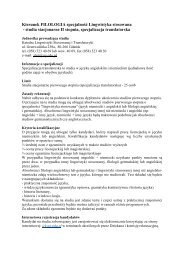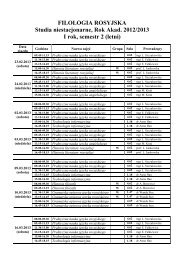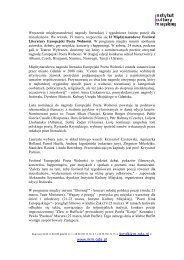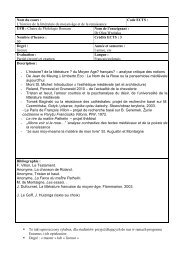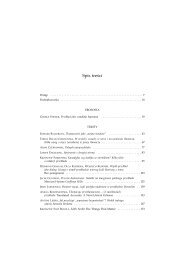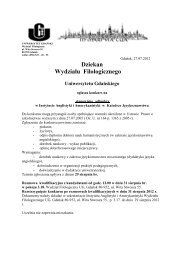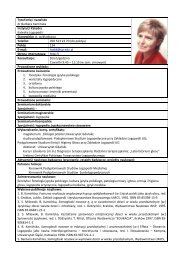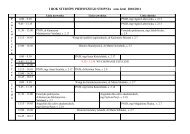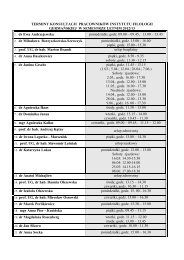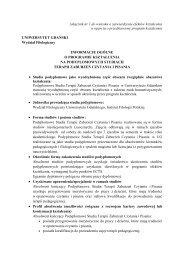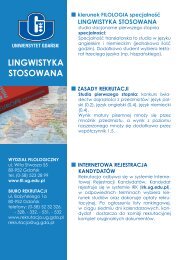I BA translatoryka
I BA translatoryka
I BA translatoryka
Create successful ePaper yourself
Turn your PDF publications into a flip-book with our unique Google optimized e-Paper software.
Program zajęć 1. The Periods in the History of English<br />
2. The Great Vowel Shift (introduction)<br />
3. English as an Indo-European language<br />
4. The family tree of the Germanic branch within the Indo-European family<br />
5. From Proto-Indo-European to Proto-Germanic<br />
6. From Proto-Germanic<br />
to Old English<br />
a) Features of West Germanic<br />
b) the Anglo-Frisian period<br />
7. Linguistic features of the Germanic languages<br />
8. The earliest texts<br />
9. Early Old English sound changes<br />
a) i-umlaut<br />
b) palatalisation<br />
c) breaking<br />
10. An Introduction to Old English<br />
a) the four main dialects<br />
b) the system of pronouns<br />
c) the sounds and letters (general characteristics)<br />
d) the system of vowels<br />
e) the diphthongs (two hypotheses)<br />
f) the system of consonants<br />
i) anterior fricatives (voicedness)<br />
ii) geminates<br />
11. Old English as a synthetic language<br />
a) the nominal system of Old English and its later development (astem,<br />
o-stem, n-stem, irregular declensions)<br />
b) the verbal system of Old English and its later development (seven<br />
classes of strong verbs, three classes of weak verbs, conjugations)<br />
12. Historical sources of the present-day English irregular verbs<br />
13. Historical sources of the irregular plurals in modern English<br />
14. The main sources of foreign vocabulary in English.<br />
15. From Old English to Middle English<br />
a) orthographic innovations in ME<br />
b) regular vowel changes:<br />
c) homorganic lengthening<br />
d) pre-cluster shortening<br />
e) open syllable lengthening<br />
f) trisyllabic shortening<br />
16. The Great Vowel Shift<br />
a) the push-chain or the drag-chain?<br />
b) long vowels followed by liquids<br />
c) exceptions (great, yea, steak, break, drain)<br />
17. Consonant Changes in Early Modern English (cf. The General Prologue<br />
to the Canterbury Tales)<br />
18. Syntactic innovations of Early Modern English<br />
19. Differences between British and American English – preservations or<br />
innovations? (some indications of what EME was like)<br />
20. The etymological and phonological vicissitudes of selected words from<br />
texts listed in the requirements<br />
a) OE hlāf > PDE loaf<br />
b) OE ēac > ME eek > PDE eke (nickname)<br />
c) OE swā > PDE so (loss of /w/ before back vowels as in ME soote,<br />
swich, PDE two, answer, sword), etc.



